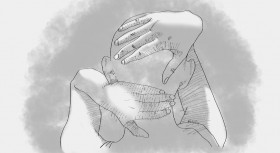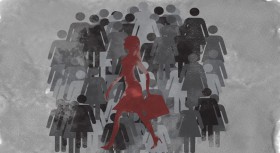The mosque, gleaming white in the street lights, sounded its call to prayer signaling the breaking of the day’s fast. I watched as people walked into Sheik Makhdum Mosque, the site of the first and oldest mosque in the Philippines.
I was at Simunul, Tawi-Tawi, the birthplace of Islam in the country during one of the holiest times of the year. A quiet sacredness rested on the town like a warm blanket. Though my host family said the place was usually quiet, it felt quieter, more solemn during Ramadan, and I could attest to that when I returned at another time a few years later.
It was my first time traveling to Muslim country in Mindanao, and I was awed by the unexpected gentleness of the place, as I kept seeing locals take time to bow and pray, a few even while traveling. In typical Filipino hospitality, our hosts went out of their way to make me and my travel companion feel welcome. They served us a generous iftar (the meal after breaking the day’s fast during Ramadan) and made us sleep in their room, among other things.
Locals took time amid their fasting to guide us through unfamiliar places like Bud Bongao, whose summit gave us sweeping views of some of Tawi-Tawi’s landscapes and seascapes.

I was met with the same kindness and hospitality in all my subsequent visits to predominantly Muslim provinces. I was also struck by all the raw beauty, especially the long white beaches and impossibly clear and beautiful waters, even in ports.
I was meeting a Muslim Mindanao quite different from the war-torn, conflict-ridden places I often see reported in media. I remember the then-Basilan tourism officer telling me that there are only certain areas in Muslim Mindanao where clashes and conflict usually take place; not all areas are unsafe like many of us believe. Her words rang especially true when I was approached by friendly locals as I walked alone on a stretch of white sand in Malamawi Island.
And, while there are indeed relatively safe places and periods to travel, conflict is still very much real in other areas. My travel companion and I were all set to go to Jolo when the tourism officer advised us at the last minute to cancel our plans, as the military who were supposed to escort us had to be in Talipao, where a clash occurred.
In Pikit, Cotabato, a young man took us to a place where trees had holes marked by bullets and weapons. There he talked about how his grandparents and other families were attacked and killed by rebels on the spot where we stood.
There also appears to be fear and distrust in some areas toward Muslims. Concerned and well-meaning Christian locals had warned me not to meet and get Muslims as tour guides. While I was saddened by this, I was more surprised when I heard Muslims warn me against fellow Muslims. They told me not to go to “Badjao Village” in Tawi-Tawi, as I might not be safe among the Badjaos there. I went anyway and let myself be amazed by the painstakingly woven, brilliantly-colored mats by the Badjaos, more formally known as the Sama Dilaut.
I had to remind myself that Muslims are divided into over 10 ethnolinguistic groups, so they may have preconceptions or biases toward other groups they do not know, in the same way Christians may also have preconceptions or biases toward fellow Christians who are different.
Instances like this remind me how there is still so much I do not know and understand about Muslims in Mindanao. I am then cautioned against drawing my own neat little conclusions, knowing that I do not know all the information and there are other perspectives I have yet to see.

I got a glimpse of another perspective when I went to Sibutu, the southernmost municipality in the Philippines, which is just around an hour away by jet ski from Malaysia, according to the then-mayor. At that “remote” place, which is as close to Malaysia as it is to the mainland of Tawi-Tawi, it was Metro Manila and Luzon that felt remote, and that the systems and way of life there do not quite fit in here in Sibutu.
Meanwhile, visiting part of an MILF camp for my documentation work in Mindanao, I was struck by how ordinary the people’s lives there seemed. My companions and I met children, teenagers, wives, and mothers. There was also a school on the grounds. The MILF camp is actually a community of families, and not exactly the all-military camp I had imagined.
My beliefs and worldviews are challenged in these encounters. Slowly, I am beginning to have a deeper appreciation and, I hope, understanding of Muslims and Muslim Mindanao. I had the privilege of witnessing other people in their attempts to understand more, too. I saw students and teachers from different faiths come together in a peace camp to celebrate and recognize their differences, and to heal their biases and stereotypes. They planted trees in the place once riddled by bullets.
I watched an Igorot teacher who was a friend of one of the fallen SAF 44 during the Mamasapano tragedy break down after he met Muslims and also learned some of their history absent in textbooks. He confessed that he had hated Muslims and had actually been teaching his students that Muslims were bad. He apologized to his new Muslim friends and vowed to teach his students differently.
We tend to judge what we do not know. It is in knowing that we see more clearly.
Currently, there is a bill already approved in Congress that can help with that – it is a bill seeking to require teaching Muslim and indigenous peoples' history in schools.
Meanwhile, in light of the proposed Bangsamoro Basic Law which will give more autonomy to Muslim areas in Mindanao, I watched a well-meaning Christian ask a Muslim why it was important for Muslims to be recognized as Bangsamoro, or even as Muslims. “Aren’t we all Filipinos?”
The question, though asked innocently, understandably sparked some frustration in the Muslim woman, as she patiently explained their history of fighting Spanish colonizers and their actions to keep their own government, among others. She said: “Yes, we are all Filipinos. But we want to be seen as Muslims too...our identity and way of life before there became Philippines.”
And perhaps that is what many Muslim Filipinos desire or even hunger for – to be seen for who they are. For their identity first to be recognized, and not dismissed. They are Filipinos, but they are also Muslims.
There is so much I do not yet understand about Muslim Mindanao and its people, but I would like to believe each travel and each conversation helps me see them more clearly. And my hope is that, more than just seeing the beauty of Mindanao, my fellow Filipinos would also see the beauty in Muslims who live there.
Claire Madarang is a writer, traveler, and seeker who believes in traveling light, particularly in the inner journey. She is also a researcher and documenter. Her work and wanderlust takes her to adventures like backpacking for 7 weeks and exploring remote islands and bustling cities alike. Follow her adventures, travel tips, and epiphanies at Traveling Light.
This story was previously published in Rappler.com, a Manila-based social news network where stories inspire community engagement and digitally fuelled actions for social change.








Comments